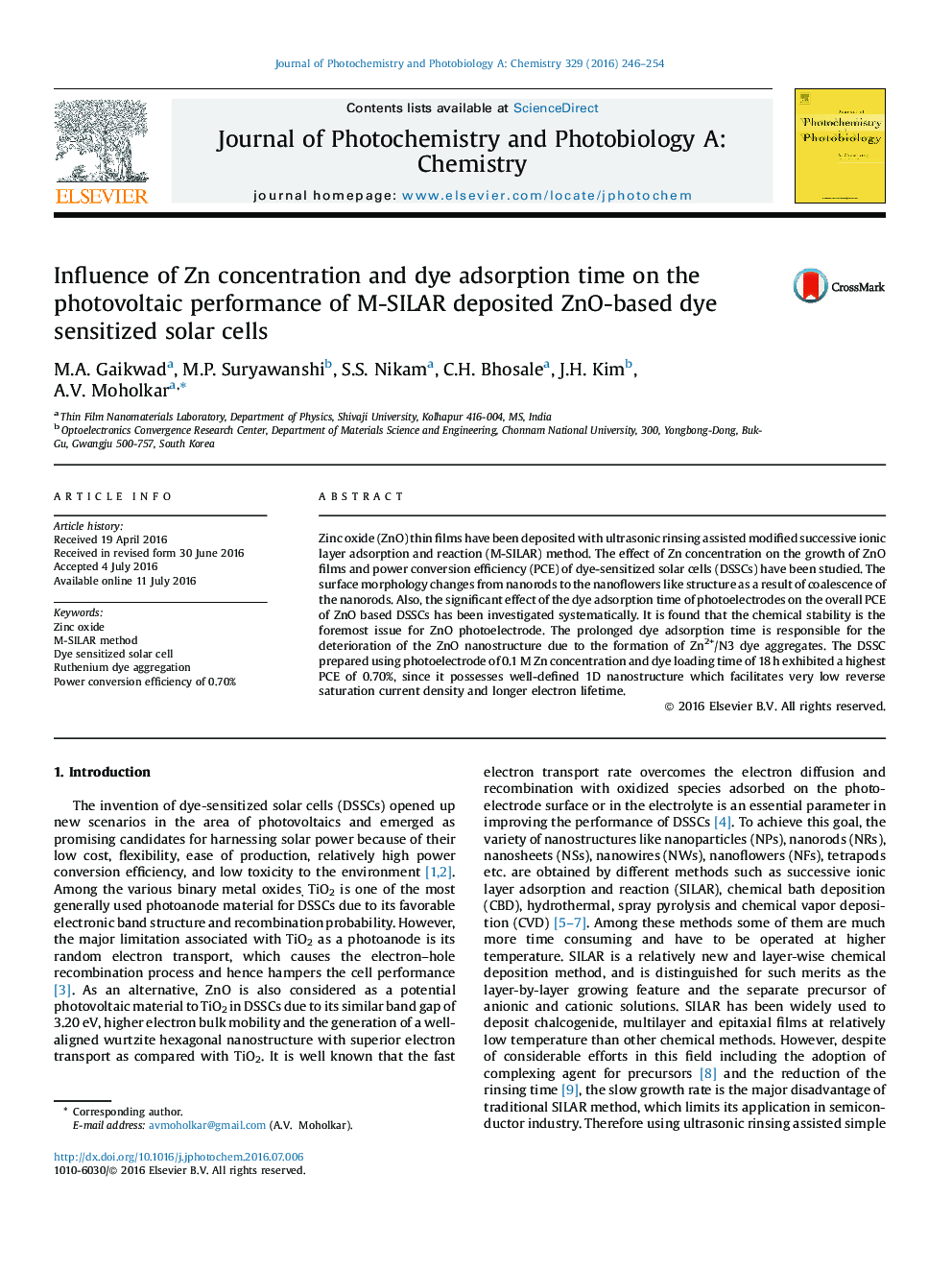| کد مقاله | کد نشریه | سال انتشار | مقاله انگلیسی | نسخه تمام متن |
|---|---|---|---|---|
| 26001 | 43926 | 2016 | 9 صفحه PDF | دانلود رایگان |

• A simple approach to prepare surfactant free 1D-ZnO nanorods without seed layer ZnO nanorods via M-SILAR method and their use as a photoelectrode in DSSCs have been demonstrated.
• Surface morphology changes from nanorods to the nanoflowers like structure as a result of coalescence of the nanorods.
• The prolonged dye adsorption time causes deterioration of the ZnO nanostructure due to the formation of Zn2+/N3 dye aggregates.
• The DSSC prepared using ZO0.1 sample exhibited the highest PCE of 0.70%, with its maximum Jsc of 5.43 mA/cm2 and Voc of 0.42 V.
Zinc oxide (ZnO) thin films have been deposited with ultrasonic rinsing assisted modified successive ionic layer adsorption and reaction (M-SILAR) method. The effect of Zn concentration on the growth of ZnO films and power conversion efficiency (PCE) of dye-sensitized solar cells (DSSCs) have been studied. The surface morphology changes from nanorods to the nanoflowers like structure as a result of coalescence of the nanorods. Also, the significant effect of the dye adsorption time of photoelectrodes on the overall PCE of ZnO based DSSCs has been investigated systematically. It is found that the chemical stability is the foremost issue for ZnO photoelectrode. The prolonged dye adsorption time is responsible for the deterioration of the ZnO nanostructure due to the formation of Zn2+/N3 dye aggregates. The DSSC prepared using photoelectrode of 0.1 M Zn concentration and dye loading time of 18 h exhibited a highest PCE of 0.70%, since it possesses well-defined 1D nanostructure which facilitates very low reverse saturation current density and longer electron lifetime.
Figure optionsDownload as PowerPoint slide
Journal: Journal of Photochemistry and Photobiology A: Chemistry - Volume 329, 1 October 2016, Pages 246–254